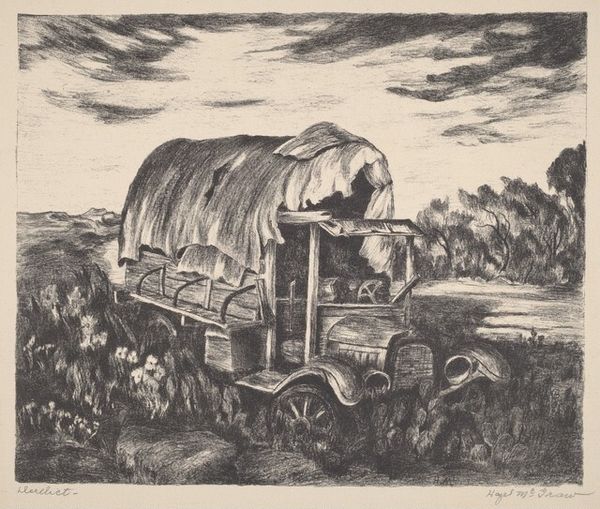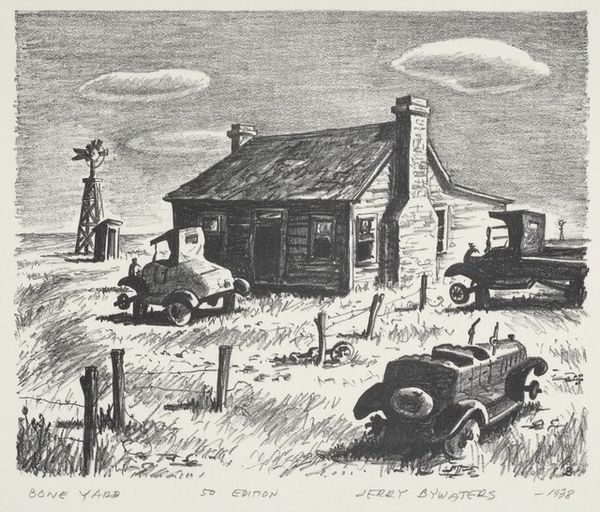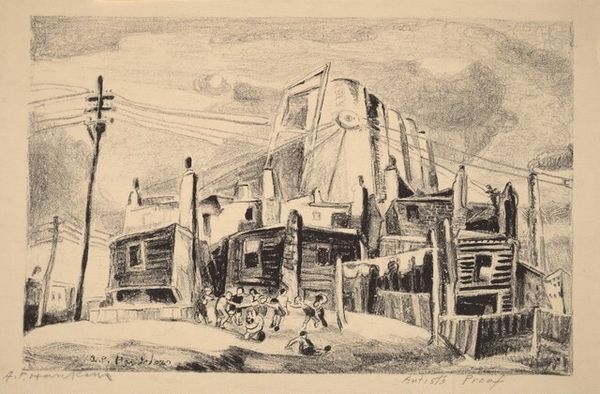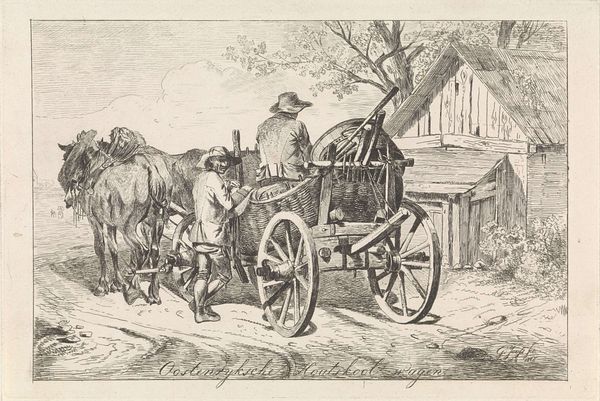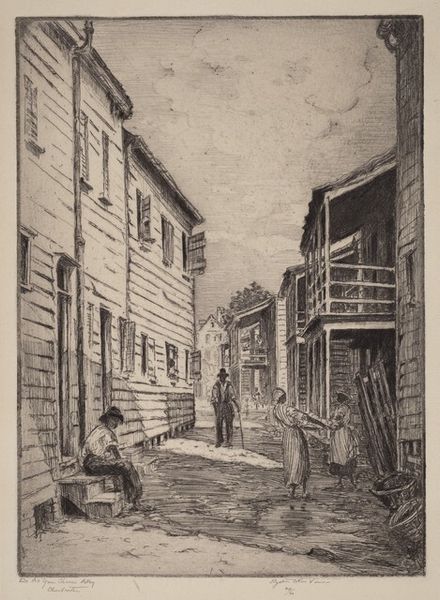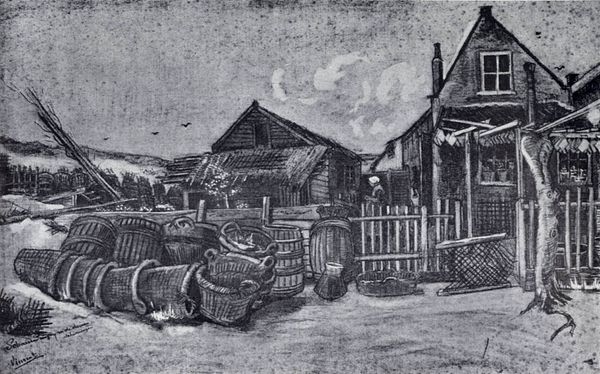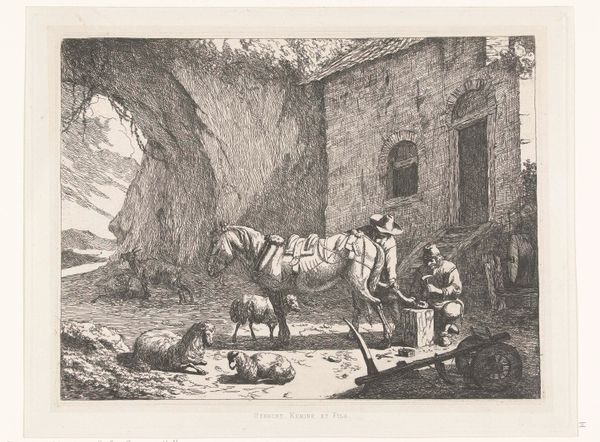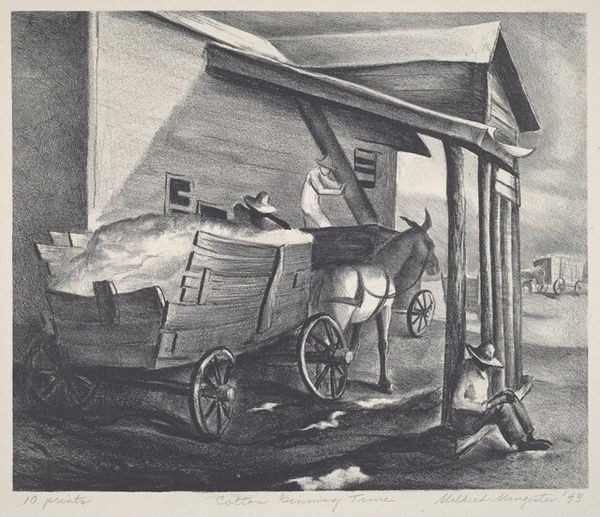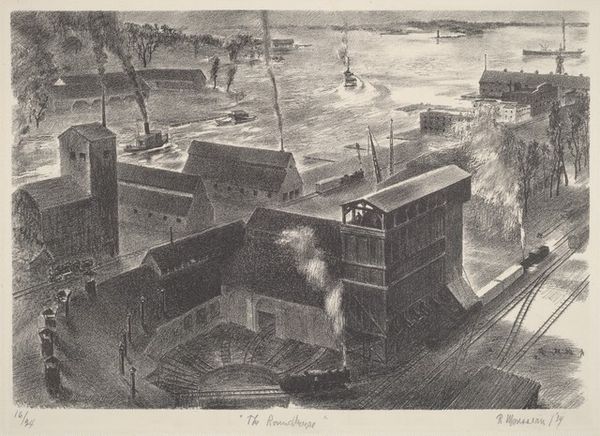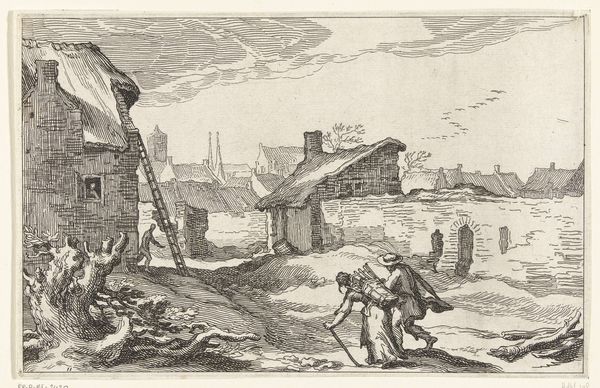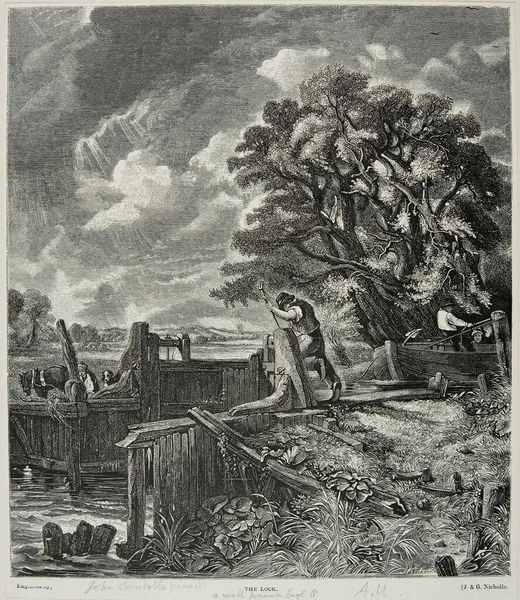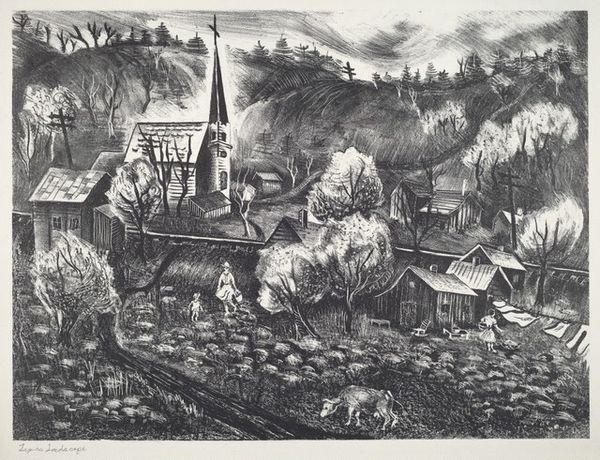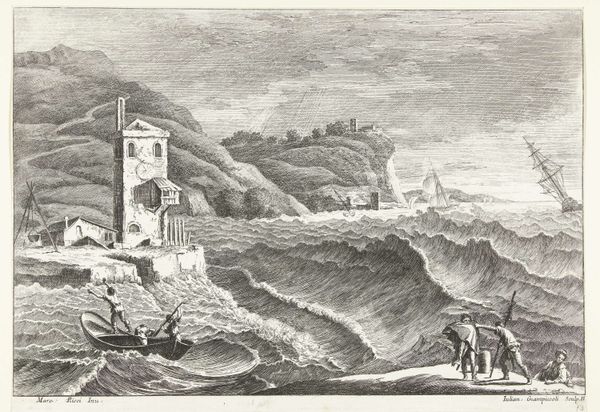
drawing, print, pencil, graphite
#
drawing
# print
#
pencil sketch
#
landscape
#
charcoal drawing
#
pencil drawing
#
pencil
#
graphite
#
cityscape
#
realism
Dimensions: image: 227 x 317 mm sheet: 291 x 406 mm
Copyright: National Gallery of Art: CC0 1.0
Curator: This somber graphite work is titled "Yolo Drive" by Nicholas Panesis, created in 1938. The street stretches upwards between simple homes, and a vintage car rests in the foreground. Editor: My initial reaction is melancholy. The scene feels suspended, like a moment captured right before some unspoken shift. Is that a commentary on Depression-era America? Curator: Potentially. Let's delve into what 'Yolo' itself might evoke. This could ironically critique the 'You Only Live Once' ethos through a subdued and seemingly unremarkable depiction of everyday life, proposing a narrative around social realism. Editor: Right. This 'unremarkable' scene is thick with class tensions and social inequities of the time. There’s a rawness and immediacy here that the artist brings through by the pencil sketches. The houses and car look weathered. Everything feels muted, reflective of constrained conditions. Curator: Considering that constraint, it is noteworthy that the drawing captures detail while maintaining a somber restraint, particularly in the shadows cast by the buildings and car. They add a depth and a gravity to the scene. Symbolically, shadows often speak to unseen elements, unconscious influences that loom large. Editor: Absolutely, and by drawing attention to a vernacular cityscape, Panesis captures ordinary lives. This can empower marginalized people and promote community-based solidarity. In doing so, is this artist, a male one in this instance, amplifying voices for broader recognition, especially with how he depicts this town in the middle of an era defined by its difficulties? Curator: Perhaps. Considering that images have the ability to communicate, and as we've observed with this portraiture of everyday life during that period, art preserves individual memory and contributes to a collective recollection about what shapes us today. Editor: That said, understanding artwork requires that we question how it shapes cultural assumptions about identity, knowledge, and power in our ever changing society, rather than letting these interpretations stay stagnant. I am seeing an emphasis here, not just about the individual struggles of the time, but on collective, quiet persistence.
Comments
No comments
Be the first to comment and join the conversation on the ultimate creative platform.
